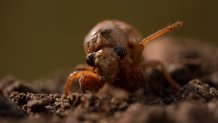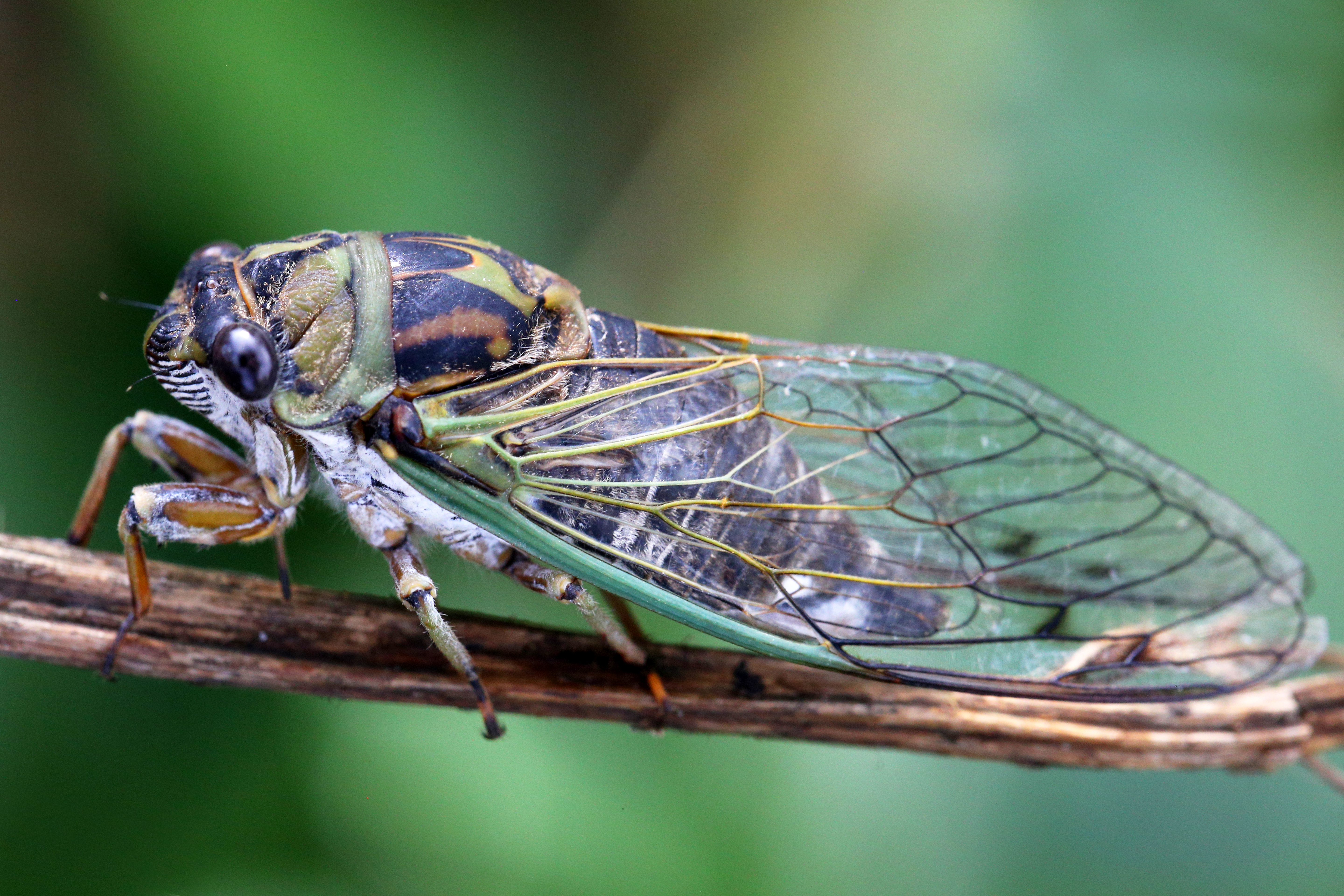The periodical cicadas that are about to infest two parts of the United States aren't just plentiful, they're downright weird.
These insects are the strongest urinators in the animal kingdom with flows that put humans and elephants to shame. They have pumps in their heads that pull moisture from the roots of trees, allowing them to feed for more than a decade underground. They are rescuers of caterpillars.
And they are being ravaged by a sexually transmitted disease that turns them into zombies.

PUMPS IN THE HEAD
Inside trees are sugary, nutrient-heavy saps that flow through tissue called phloem. Most insects love the sap. But not cicadas — they go for tissue called xylem, which carries mostly water and a bit of nutrients.
And it's not easy to get into the xylem, which doesn't just flow out when a bug taps into it because it's under negative pressure. The cicada can get the fluid because its outsized head has a pump, said University of Alabama Huntsville entomologist Carrie Deans.
They use their proboscis like a tiny straw — about the width of a hair — with the pump sucking out the liquid, said Georgia Tech biophysics professor Saad Bhamla. They spend nearly their entire lives drinking, year after year.
“It's a hard way to make a living,” Deans said.
FDA warns people with seafood allergies: Don't eat Cicadas
Feeling out of the loop? We'll catch you up on the Chicago news you need to know. Sign up for the weekly Chicago Catch-Up newsletter.
GOING WITH THE FLOW
All that watery fluid has to come out the other end. And boy does it.
Bhamla in March published a study of the urination flow rates of animals across the world. Cicadas were clearly king, peeing two to three times stronger and faster than elephants and humans. He couldn't look at the periodical cicadas that mostly feed and pee underground, but he used video to record and measure the flow rate of their Amazon cousins, which topped out around 10 feet per second (3 meters per second).
They have a muscle that pushes the waste through a tiny hole like a jet, Bhamla said. He said he learned this when in the Amazon he happened on a tree the locals called a “weeping tree” because liquid was flowing down, like the plant was crying. It was cicada pee.
“You walk around in a forest where they're actively chorusing on a hot sunny day. It feels like it's raining,” said University of Connecticut entomologist John Cooley. That's their honeydew or waste product coming out the back end ... It's called cicada rain."
GOOD FOR CATERPILLARS
In the years and areas where cicadas come out, caterpillars enjoy a cicada reprieve.
University of Maryland entomologist Dan Gruner studied caterpillars after the 2021 cicada emergence in the mid-Atlantic. He found that the bugs that turn into moths survived the spring in bigger numbers because the birds that usually eat them were too busy getting cicadas.
Periodical cicadas are “lazy, fat and slow,” Gruner said. “They're extraordinarily easy to capture for us and for their predators.”
ZOMBIE CICADAS
There's a deadly sexually transmitted disease, a fungus, that turns cicadas into zombies and causes their private parts to fall off, Cooley said.
It's a real problem that “is even stranger than science fiction,” Cooley said. “This is a sexually transmitted zombie disease.”
Cooley has seen areas in the Midwest where up to 10% of the individuals were infected.
The fungus is also the type that has hallucinatory effects on birds that would eat them, Cooley said.
This white fungus takes over the male, their gonads are torn from their body and chalky spores are spread around to nearby other cicadas, he said. The insects are sterilized, not killed. This way the fungus uses the cicadas to spread to others.
“They're completely at the mercy of the fungus,” Cooley said. “They're walking dead.”

___


